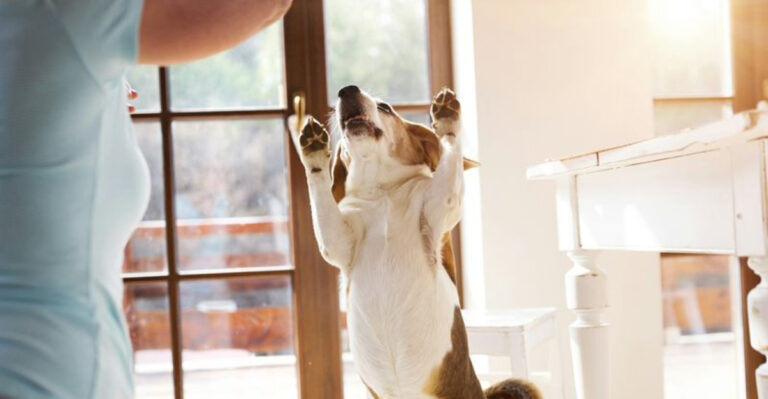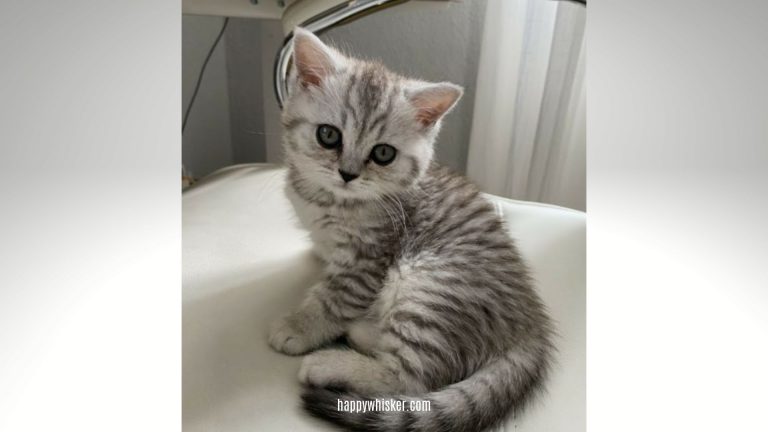Why Is My Cat Sleeping Face Down? 5 Possible Reasons
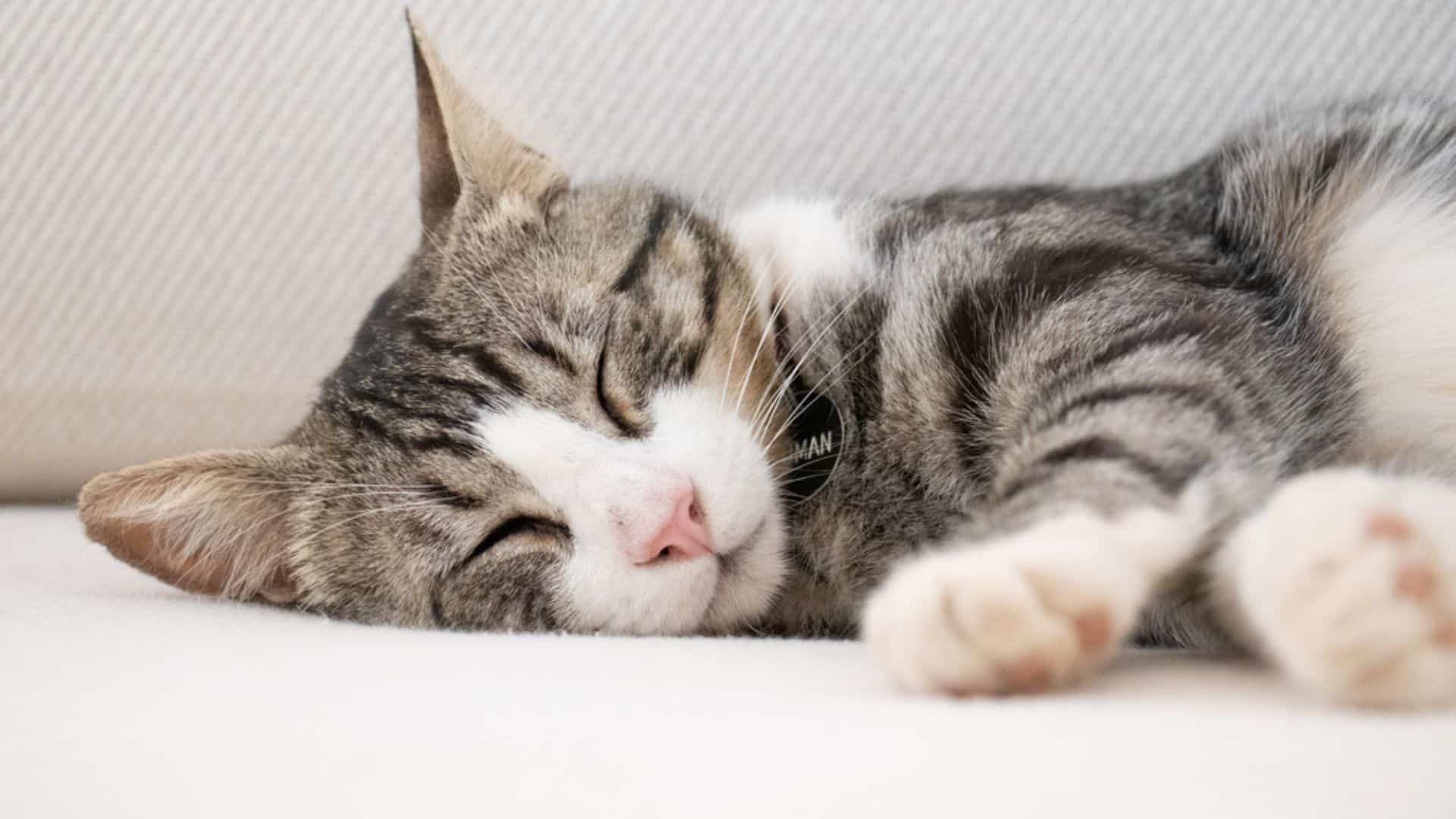
Our cats’ body language and overall cat behavior can tell us a lot about our cats’ mood, and health, and sometimes it’s the only thing that can help us determine if something is wrong with our beloved pets.
Cats love to sleep in warm places, especially because they want to preserve their body temperature so they’re neither too hot nor too cold. Cat lovers adore seeing the different sleeping positions cats have, like the belly up or the loaf position.
However, some cat owners tend to worry when they see their cat sleeping face down. Is this sleeping behavior normal? Even though it may seem like the least comfortable sleeping position, our cats wouldn’t fall asleep if this was true.
Let’s see why some cats prefer to do it.
Make A Distinction: Is Your Cat Sleeping Face Down Or Is It Awake And Head Pressing?

First of all, we must distinguish whether your cat is sleeping with its face down, or if it is head-pressing against a hard surface.
Cats will often sleep facing down, but it is different when they press their heads on the ground or even against a door or a wall, or any hard surface. Cat’s head pressing is actually conscious, and they do it while being awake.
Cats do it on purpose and it may frequently indicate a few health conditions, like fluid on the brain, brain tumors, liver failure, strokes, vascular brain injury, and exposure to poisonous substances.
If you ever spot your cat head pressing against a hard surface, you should go to see the vet immediately! As all these conditions are severe, they can very quickly turn into life-threatening issues.
How can we differentiate between head pressing and a cat sleeping face down? Luckily, there are a few ways that can help you to distinguish the two easily.
Is The Cat’s Head Pressing On A Soft Or A Hard Object?
Cats will, in most cases, press their heads against a hard surface when awake, but when asleep, they will be face down on a soft, comfortable surface.
Your cat will be sleeping in their favorite spot, on the couch, or anywhere where it’s comfy, just their sleeping position will be different.
Is Your Cat Awake Or Asleep?
It is very uncommon for cats to lie facing down unless they’re in a deep sleep. However, a cat’s head pressing may or may not involve sleeping, but it is more likely to happen while a cat is awake due to some injury or health problem I’ve mentioned above.
Is Your Cat’s Body Tense Or Relaxed?
If your cat is sleeping face down, its body will most likely appear relaxed, your cat will look comfortable and peaceful. Whereas, if your cat is head pressing, its entire body will be tense and stiff from the pain it’s experiencing.
Did You Notice Other Symptoms?
In the case of head pressing, you will likely notice other signs and symptoms like pacing or problems with vision. Head pressing can also cause facial injuries because cats tend to use a lot of force while doing it.
On the other hand, if your cat is simply sleeping face down, there shouldn’t be other symptoms involved.
How To Help With Your Cat’s Head-Pressing?
If you establish your cat is head pressing and not just sleeping with its face down, you should talk to your vet asap. This kind of behavior should never be ignored because it can indicate a variety of serious medical conditions.
During the appointment, your vet will examine your cat to determine the exact cause of this behavior. You must also pay attention to any visible symptoms and report them to the vet since it may help determine the diagnosis.
After the check-up, your vet will propose possible treatment options. It all depends on the exact diagnosis of the underlying problem. Seeking professional help is necessary, and it gives your cat the best chance for recovery.
See also: Why Is My Cat Sleeping Under A Blanket?
Common Reasons Why Do Cats Sleep Face Down
Now that we’ve seen the difference between cat sleeping face down and head-pressing, we can move on to different reasons why cats sleep face down. I hope your kitty is simply purring and enjoying its sleep in this position and not head-pressing!
There is usually nothing scary or concerning when your cat is sleeping face down. It is probably comfortable and usually aids them in getting good sleep.
This position is also ideal for daytime naps because the cat’s ears can still easily pick up all sounds around them. Additionally, your cat could simply be too tired to roll around into a more comfortable pose.
1. Kitty’s Nose Is Cold
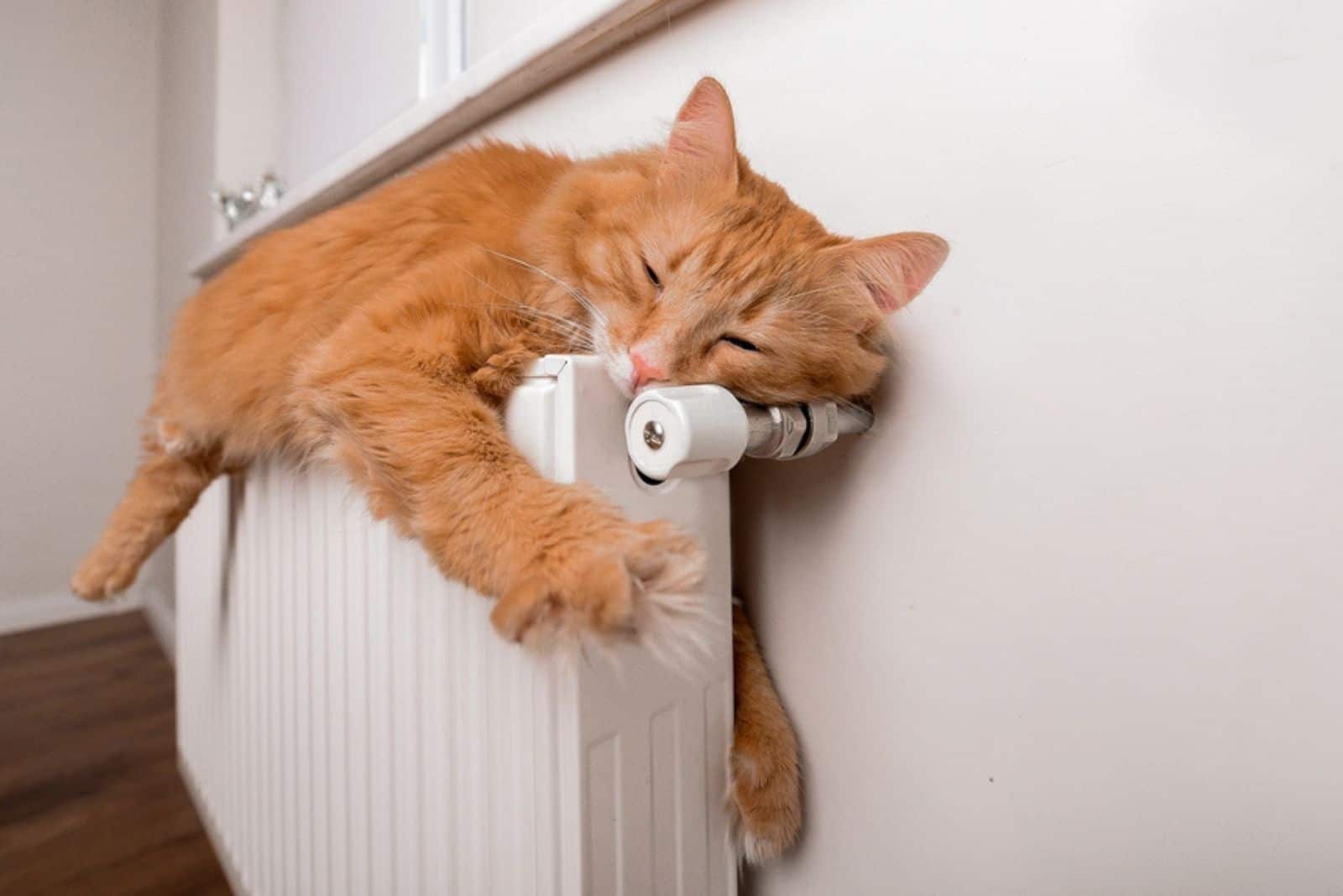
The most common reason cats sleep in this position is because their noses are cold and need to be warmed up. Cats have slightly warmer blood than humans and naturally like to snuggle up in warm areas of the house.
My cats’ favorite napping spot is always next to the radiator or the fireplace. Does your cat also come to bother you and lay on you while you sleep? Again, this is due to warmth – your body heat helps keep them cozy and warm.
Cat’s noses and the tips of their ears are where cats feel the coldest. Cats also lie on their stomachs with their face down to protect their noses from the outside world. Cats that sleep on their stomach can bury their noses in pillows or blankets to keep them warm.
If your cat frequently sleeps with its face down, check if its sleeping area is warm enough. This may indicate that it is too cold to sleep well. Other tips to help your cat sleep better include:
• Playing with the cat before going to bed to make it tired
• Making sure the sides of the cat’s bed are high so that it can feel safe and relaxed while sleeping
• Placing the bed in a higher place, such as a window sill
• Putting the bed in a warm place in the house
• Feeding your cat just before bedtime
• Making sure that your cat’s bed is comfy and secure with pillows and blankets
• Using a soothing spray or diffuser to help your cat relax
• Making all this an everyday routine
See also: Do Cats Sleep More In Winter? 10 Tips On Cheering Up Your Cat
2. Covering Eyes ‘Cause It’s Too Bright
If your cat sleeps with its face down, even on a scorching summer day, this position is definitely not for warming its nose. Your cat’s nose is probably already warm!
However, cats may sleep face down in an attempt to block out the sun’s rays or even inside to block out the light.
Whether it’s their paws or a pillow, covering their eyes can block the light and help them get some good sleep. It’s similar to us wearing an eye mask for uninterrupted sleep or closing the curtains before bed to prevent the morning sun from waking us up.
This may come as a surprise to many owners. Cats love naps and seem to be able to fall asleep at any time, whether it’s dark or bright. In fact, cats take naps and don’t actually sleep most of the day, but they sleep during the night.
Instead, during the daytime, they take a nap! When our furry friends are napping, they are resting while at the same time staying alert. They are still very aware and conscious of everything going on around them.
For example, you may notice that your cat’s ears perk up and respond to sounds even though it looks asleep. Therefore, if your cat really wants a deep sleep, sleeping face down is a great way to do so.
3. Your Cat Is Too Tired

Your cat sleeping on its face could also be a sign of extreme tiredness. They are so tired that they don’t mind not rolling into a comfortable position. Instead, they simply place themselves on their face and quickly fall down and lie flat on their face while they sleep.
Most cats, especially younger cats, have relatively high activity and energy levels. All that exhausting activity may have tired your cat out! They are so tired that they fall asleep on their faces.
However, if you’re constantly seeing your cat sleeping, it could be an indication that it is not feeling well. If your cat is lethargic, it can indicate many diseases.
The majority of the cat’s energy is spent because the body attempts to recover, and the cat’s immune system tries to fight off an illness or an infection. It is actually quite common for cats to feel tired and worn out after all their daily activities.
Some of the most common medical conditions that may be underlying your cat’s frequent sleeping and also sleeping on its face are the following:
• Parasitic infection
• Bacterial or viral infection
• Diabetes
• Breathing problems
• Digestive disorders
• Kidney or liver disease
• Cardiovascular disease
• Some type of cancer
While lethargy is a symptom of various conditions, the other clinical signs may vary greatly.
If you notice other symptoms or unusual behavior changes in addition to frequent sleeping with its face down, take your cat to the vet. Your vet will know exactly what the issue is and how to help.
Suggested: 10 Cat Sleeping Positions: Understand Your Feline
4. In Order To Hear Better?
As I mentioned earlier, even though our felines appear to be asleep, they usually just take a nap and listen to what’s going on around them.
Also, when they sleep on their stomach with their face down, their ears face up, which is the best position to catch as much ambient noise as possible. Cat naps are natural and date back to before cats were domesticated.
Cats are predators by nature, but they also serve as prey for bigger animals in the wilderness. Many of these big, dangerous animals are most active during the day, which makes sleeping hours dangerous for cats.
However, napping allows your cat to rest a little without taking too much of a risk. They can monitor their surroundings at all times, so they can hear if something dangerous is approaching.
This will give them enough attention to get up and run away or attack and defend themselves. Even if there are no dangerous predators in your home, our domestic cats inherited this instinctive behavior from their wild ancestors.
As a result, many cats prefer to sleep face down because their ears are not blocked. Other sleeping positions can cover one or a part of their ear, so they are not as aware as when sleeping with a face down.
5. It Is Simply Comfortable
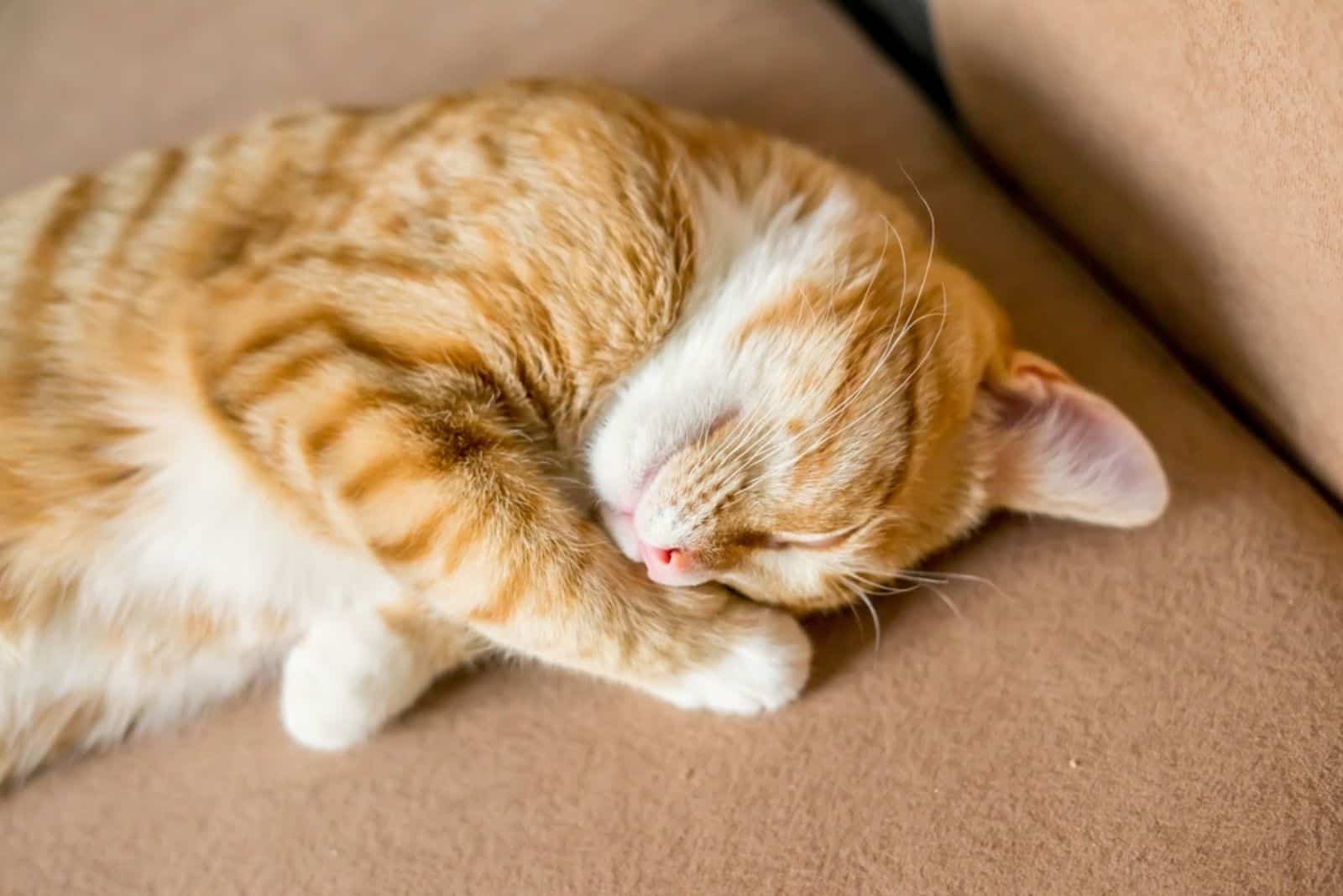
Each of our feline friends has their own favorite napping spot as well as position, and sleeping face down may just be your cat’s favorite.
In fact, your cat will feel comfortable no matter what position it sleeps in. If this wasn’t the case, they would not be able to fall asleep in it at all.
Every cat has a preferred sleeping position, whether they sleep on their stomach, in a loaf position, or stretched out on their side.
This is critical because their body relaxes, heals, and grows during this stage of deep sleep. The cat’s energy levels are then restored, and its body is given the opportunity to regenerate.
The cat is constantly tired and prone to illness if this sleep phase is not present. Cats alternate between this sleep stage and another known as REM sleep during deep sleep. When you notice your cat jerking while sleeping, you know it is in REM sleep.
This is the stage at which cats dream, and it is essential for memory and learning. Finding a comfortable position and getting a sufficient amount of rest is, therefore, critical. Allow your cat to sleep face down if it prefers.
However, keep in mind that you should still see some variety when it comes to sleeping positions. It could be a sign of illness if your cat always sleeps in the same pose. If you are unsure, or if you notice this along with other symptoms, take your cat to the veterinarian.
Check out: Why Do Cats Cover Their Face When They Sleep? 7 Reasons
Final Thoughts
Seeing your kitty sleep in a loaf position, where your cat keeps its paws tucked in out of sight, is the cutest thing, or your cat might prefer the most common sleeping position, i.e. snuggling up in the form of a ball.
There are many different cat sleeping positions, and your cat sleeping face down is one of them. Adult cats sleep a lot, in their cat bed, in your bed, or anywhere they feel comfortable and safe. Some cats feel comfy with their face tucked in as well.
Others, however, can’t be bothered to find a more comfortable pose because they’re just too tired and will sleep with their face down without a problem.
In any case, cats sleeping with their face down is nothing that should trouble you. However, you must ensure that your cat isn’t head-pressing while awake. If this happens, consult your vet because you want to treat any underlying condition that might be present.




